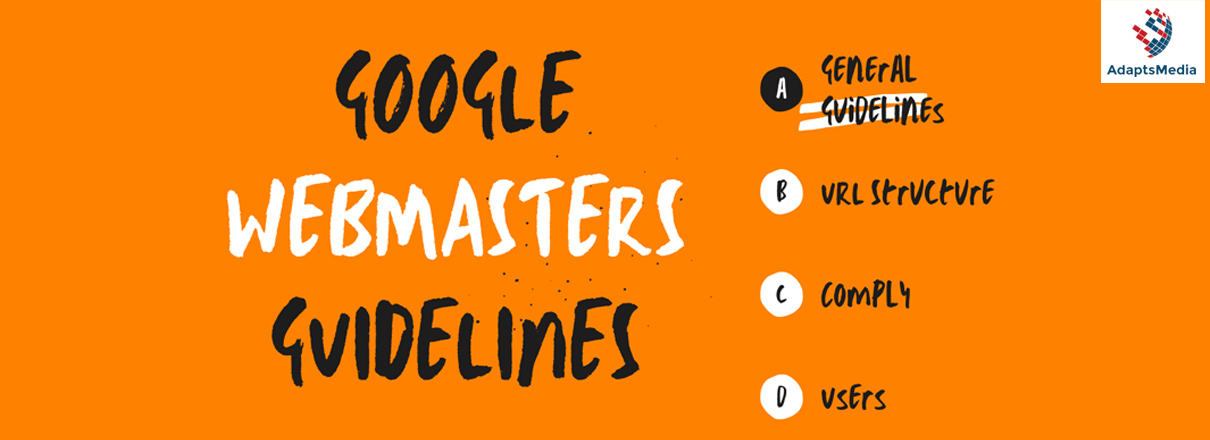Put no second thought into it that Google’s Webmaster Guidelines are fundamental to achieve success in your SEO endeavours. If you don’t follow the predefined guidelines, the chances are that you may experience either an algorithmic devaluation or manual penalty.
In the most extreme cases, your site may be permanently banned from Google’s SERFP. So, it’s essential that you understand the guidelines.
Let’s dig deep to understand!
Google Webmaster Guidelines
Google webmaster guidelines are separated into the following –
- Webmaster Guidelines – These are the best practices that you must follow so that your site appears in SERP.
- General Guidelines – These are the best practices that will help your site look its best in the SERPs.
- Content-specific Guidelines – These are the specific guidelines pertaining to the contents on your site, such as images, videos, and others.
- Quality Guidelines – These include all the parameters that you must follow to avoid getting penalized by Google.
Now that you know the guidelines you must follow, the next hurdle is to apply those on your websites in a way such it’s compliant with the guidelines.
You are Using Relevant Keywords
Your site should be easily discoverable. An easy way to determine whether you are using relevant keywords is to compare your content with the top pages and analyse the keywords they have used in their page title and meta description. You can also use SEO tools like SEMRush and Ahrefs to perform a competitor analysis.
If your site isn’t ranking for any relevant keyword, you need to perform a keyword research and an in-depth competitor analysis to find a set of keywords that you need to rank for to drive relevant search traffic and increase sales.
Your Site is Properly Interlinked
Google recommends that every page on your website must have at least one link from another page. Links help establish communication in the online community. You should ensure that the links on your website must be crawlable as this helps Google better understand your site. In the process, avoid using generic anchor texts while creating these links and keyword phrases for describing the outgoing page.
If your site has orphaned pages, make sure that at least one link from the site links to every potential pages on the site. And if the page is not a part of your site, either delete it or add a no-index tag.
Limit the Quantity of Baclinks on a Page
Google recommends not to use more than 100 links per page. It’s always better to have quality backlinks rather than focussing on quantity. As a matter of fact, too many links can adversely affect the user experience. If you have too many links per page, this may induce crawling errors. Ensure to reduce the links per page and have only the quality ones.
Use Robots.txt File to Manage Your Crawl Budget
Crawl budget optimisation is necessary to ensure that Google crawls your site efficiently and easily. You can optimise your crawl budget through the links on your site and robots.txt.
If you see that your website has ‘disallow: / ‘ in its robots.txt file, this means that robots.txt file is disallowing crawling. You can easily solve this by deleting the line. It may so happen that your site doesn’t have a sitemap.xml file directive in the robots.txt file. In this case, just add a directive declaring the location of the sitemap file.
Create Useful Contents
It is evident that Google prefers sites that provide value to users. Before you start creating contents, perform a thorough content analysis to narrow down sites that are information rich in your niche. This will tell you what other sites are writing about, how they are writing, and the structure they are following while creating contents. If your site is full of short, thin content, it’s time you come up with a comprehensive content strategy.
Include the Words that Your Users Might Use to Find Your Pages
When performing keyword research, ensure that you have figured out how users search for your site. When conducting keyword research, you must consider your customer’s search intent.
Once your keyword research is done, proceed with on-page optimisation. This includes making sure that the pages on your site have the target keyword or phrase so that it’s easily discoverable in SERP.
If your site doesn’t have anything but branded keyword phrases, it’s time you perform a thorough keyword research and focus on those with broader relevancy. Include those keywords not only in the main content but also in the meta description and title.
Design the Site So That It Has a Proper Page Hierarchy
Your site must be organised as per the relevance of the topics. The main topics of the site must be arranged, with subtopics arranged underneath. These are known as SEO silos.
There’s no denying that SEO Silos are a great way to organise the pages on a site according to the topics. Ideally, you must create a website architecture relevant to its contents.
If your site has pages without much interlinking and proper website architecture, you must create a siloed website architecture similar to that of your competition. This will help improve your organic traffic and ranking as a whole.
Make Sure that the All Important Contents are Visible
While building a website, make sure that the most important contents of your site are visible by default. Your visitors must not be bothered by unnecessary buttons, tabs, and other navigational elements. Google recommends that you must make your information visible in the default page view.
So, here are the Google webmaster guidelines that you must know and understand. Unless you are thorough with these, you may earn strict penalties from search engines. Do share your thoughts in the comment section and let us know if we missed discussing something important.
Don’t miss out on the opportunity to gain a competitive edge. Contact our team for expert assistance.

